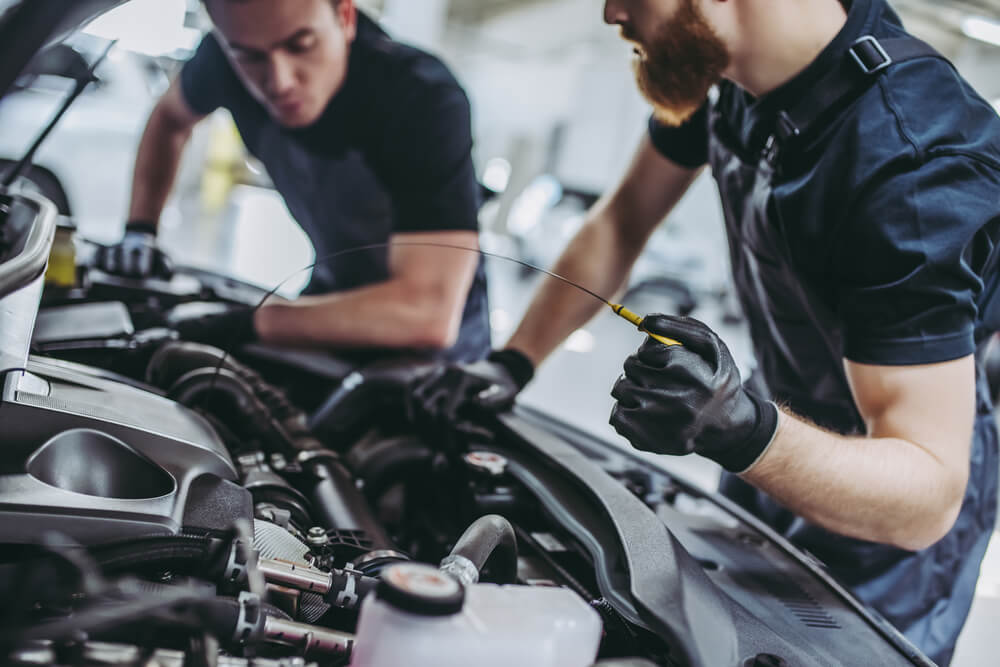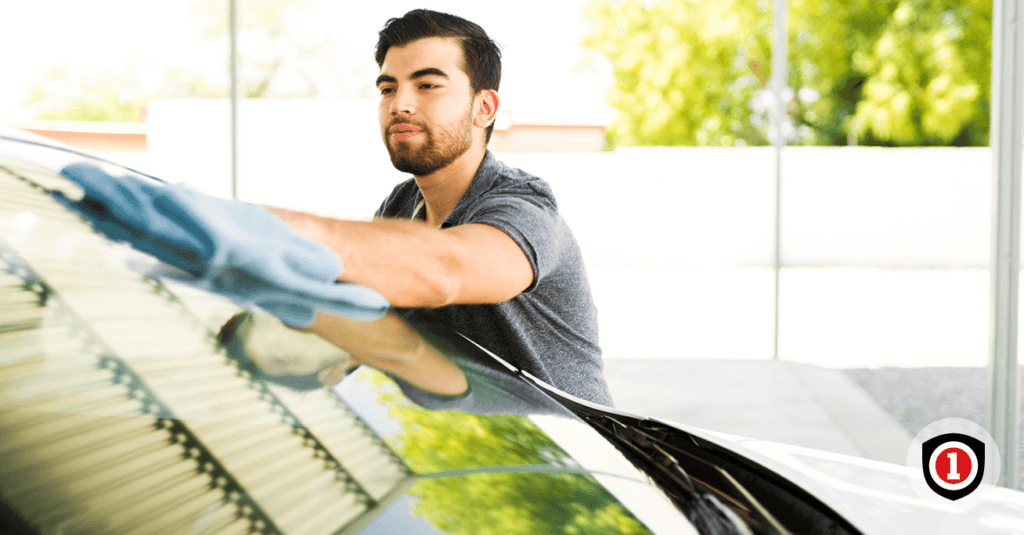The Essential Owner’s Guide to Car Maintenance

Your car’s performance, safety, comfort, and resale value all depend on regular maintenance. However, there’s a lot to know about car maintenance. There are oil changes, brake and transmission fluid changes, headlights, tires, and more — which should you worry about, and when?
Below, you’ll find all the resources you need to keep a regular car maintenance schedule and make sure your car stays in tip-top shape. For more information, be sure to read our six tips for car care.
The Benefits of Car Maintenance
Preventive Work is Cheaper
If it’s not broken, don’t fix it — but do prevent it from breaking in the first place. Preventive work is far cheaper than fixing a problem in all cases. For instance, an oil change is usually under $100. Replacing the engine because you forgot to change the oil? That’s more like $4,000-$6,000. That makes oil changes 40 to 60 times cheaper.
The same goes for things like changing out the brake fluid, transmission fluid, filters, lines, and hoses — it’s always going to be your best financial bet to fix problems before they occur instead of putting out fires (hopefully not literally). If you want to save even more, consider an auto maintenance plan.
Your Resale Value Will Be Far Higher
When cars are maintained well, it shows. The paint is brighter, the car handles better, and things look and feel fantastic. It’s one of the first things buyers will ask when they look at your car.
By maintaining your car and keeping a log of oil changes and larger maintenance work, you will get more money when it comes time to sell.
Your Car Will Be Safer to Drive
So many of the features that add to a car’s performance also directly affect your safety.
For instance, your tire treads — on both summer and winter tires — are what allow you to maintain control of your car in all conditions. Your brake fluid keeps your brakes running responsively, your radiator fluid keeps your engine from overheating, and your wiper blades keep the road ahead of you visible in all weather.
Cars Are Complex Machines
Your car is a collection of around 30,000 parts. Over 100 of those are moving parts that wear down more quickly over time. That means your car is an extremely intricate machine.
In order to run properly and keep all of these parts working in sync, it requires clean filters, regular lubrication, fine adjustments, and tuning. If you give it the care it needs, even this complex machine will keep things simple for you.
Your Car Will Feel Better to Drive
Maybe it’s partly a placebo effect, but there’s also a lot of truth to this feeling. Oil changes, fluid top-offs, and part replacements will keep your engine running smoothly. Tire rotations will ensure your tires are stable and grippy on the road. And cleaning your car removes any items that might roll around and cause noise or vibrations whenever you take a corner.
So whether it’s something done in the shop or something you do on your own, staying on top of your car maintenance will definitely make your car feel better to drive.
Make a Maintenance Schedule
Instead of relying on your memory or waiting for a problem to occur to remind you when to do car maintenance, consider using a schedule. It should group car maintenance tasks into periods of one month, three months, six months, or one year (or the equivalent mileage driven).
Monthly Maintenance

Monthly maintenance can be done quickly in one fell swoop, or you can tick off the boxes one by one as you go about your day or commute. These are nothing fancy and are mainly there to prevent problems from occurring.
Here are the items you should put on your monthly maintenance list:
- Check engine light: Make sure your check engine light is not on. If you ever find this light has come on, take your car to the shop immediately — it could indicate a serious problem!
- Warning lights: Do a check for other warning lights as well, including ones indicating low tire pressure, oil life, and other warnings.
- Windshield wiper fluid: Your windshield wiper fluid can save your life. Make sure your tank is topped off once per month. If the weather is turning colder, make sure to fill it with below-freezing fluid to avoid frozen lines (and dangerous situations when wet, salty road spray coats your windshield).
- Get a car wash: Your paint needs to stay clean and waxed to preserve its color, shine, and protective qualities.
- Clean your car: Vacuum, wipe down and declutter to keep your car’s interior looking fresh. This is one of the best ways to make an old car look like new.
- Lights: Make sure your headlights, running lights, taillights, and turn signals are all functioning, as well as your interior dome lights.
- Tire pressure: If your tires are under-or overinflated, they will wear irregularly and cause a safety hazard.
- Tire tread depth: Your tires should have a minimum tread depth to prevent you from hydroplaning or sliding. There are small bars connecting the treads to indicate the minimum depth.
Every Three Months (or 3,000 Miles)
Next, are the bits of routine maintenance performed. The following are crucial for the operation and function of your car every three months or 3,000 miles, whichever comes first:
- Fuel filter: Your fuel filter keeps small particles like dirt, dust, and rust from reaching your engine through your fuel, which can cause major damage. Make sure your fuel filter gets changed with every oil change.
- Tire rotation: You should do this every oil change.
- Oil change: If your car takes regular motor oil, have it changed every 3,000 miles (with a tire rotation included).
- Adjustments: If needed, your hoses, belts, and exhaust elements should be adjusted or replaced.
Every Six Months (or 6,000 Miles)
When it comes to your six-month to-do list, you are looking at items that are needed less frequently but are no less important. You should perform all of the previously mentioned checks plus these:
- Chassis lubrication: While some newer vehicles include parts with “lifetime lubrication,” most cars do not. Your car’s chassis includes all steering joints, suspension bushings and joints, U-joints, and sway bars. Each of these needs a look-over to see if more lubrication is needed.
- Replace wiper blades: By the six-month (6,000-mile) mark, your wiper blades have likely worn down enough that they should be replaced.
- Wax: Your car should receive a new coat of wax twice a year: once for the summer and once for the winter. This protects your car’s paint job from the harsh summer sunlight and wet, salty winter driving.
- Battery check: Your car’s battery and cables should receive a once-over at this point.
Every Year (or 12,000 Miles)
Finally, these are the bits of maintenance you should perform once per year. Systems like your brakes and radiator are meant to last long periods of time but still need routine maintenance. Do the following:
- Brake check: Your car’s brake pads and rotors wear down or warp over time. Check both once per year to see how they are wearing. Don’t wait until your brakes are metal-on-metal — you could unexpectedly lose your ability to stop your car.
- Fluids: Your transmission and radiator fluids should receive some attention once per year. Whether they need to be topped off or changed out, it’s important to have them taken care of.
- Suspension: Your suspension undergoes a lot of wear and tear. Have it inspected and worked on once per year if necessary.
- Wheel alignment: If you drive on rough roads or notice your car pulling one way or another, you may need a wheel alignment.
InsureOne Is Here to Help
Keeping your car in good shape is your business—protecting you on the road is our business. InsureOne offers leading auto and RV insurance, including for antique and classic cars. We even offer car maintenance plans! Contact us today to see how we can meet your needs with our affordable policies.


